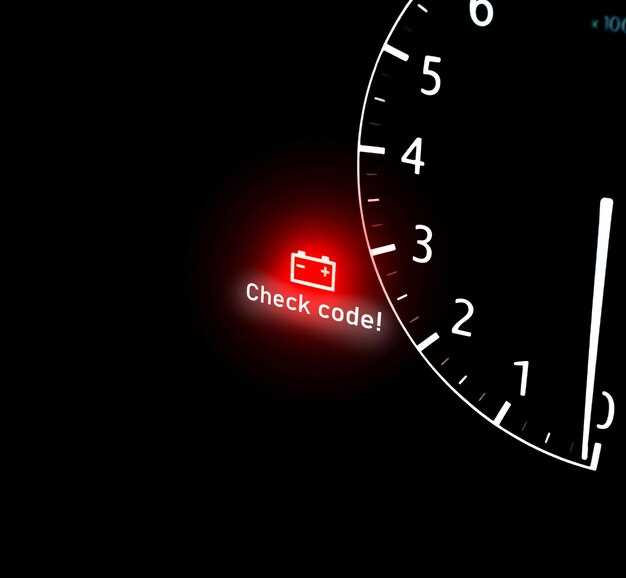
What to do when dashboard lights flicker
- Dominique Kaye
- 0
- Posted on

Flickering dashboard lights can be more than just an annoyance; they often serve as critical warning signs that your vehicle needs immediate attention. As a driver, it’s essential to understand what these unpredictable lights indicate about your car’s health. Ignoring them can lead to more significant issues down the line and may even compromise your safety.
When lights on your dashboard flicker, they might signal various problems ranging from a failing battery to electrical issues or even complications with the alternator. Recognizing these warning signs early can help mitigate potential damage and save you from expensive repairs. Understanding the underlying causes of these flickering lights is crucial for maintaining vehicle performance and ensuring a safe driving experience.
In this article, we will explore practical steps you can take to diagnose and address flickering dashboard lights effectively. Armed with this knowledge, you’ll be better equipped to determine whether a simple fix, like replacing a bulb, or a more in-depth inspection is required. Stay tuned to learn how to keep your car running smoothly and safely by handling these important signs of trouble promptly.
Identifying Common Warning Signs of Dashboard Light Issues

Dashboard lights serve as essential indicators of your vehicle’s health. Recognizing the common signs of dashboard light issues can prevent more significant problems down the road. One of the most noticeable signs is flickering lights. If the dashboard lights blink intermittently, it could indicate a poor electrical connection or a failing battery.
Another critical sign to consider is the illumination of multiple warning lights simultaneously. When several lights activate at once, it often suggests a more severe issue, such as problems with the car’s electrical system or malfunctioning sensors. Pay attention if the check engine light flickers; it may signify that the engine is experiencing issues requiring immediate attention.
Inconsistent brightness is another warning sign. If the dashboard lights appear to dim or brighten without reason, this may indicate a problem with the vehicle’s alternator or wiring. Additionally, strange sounds accompanying the flickering could point to issues with electrical components in the dashboard itself.
Monitor any patterns in light behavior. For example, if the lights only flicker when the engine is idling or under specific conditions, it may help pinpoint the fault. Always consult your owner’s manual to understand the light meanings and react accordingly. Timely diagnosis of these signs can lead to prompt repairs, ensuring your vehicle remains safe and reliable.
Step-by-Step Troubleshooting for Flickering Lights
If you notice flickering lights on your dashboard, it can be a sign of underlying issues that need attention. Follow these steps to effectively troubleshoot the problem.
First, start by inspecting the vehicle’s battery. A loose or corroded battery terminal can result in inconsistent power delivery. Ensure the connections are clean and tightly secured. Use a multimeter to check the battery voltage; a healthy battery should read around 12.6 volts when the engine is off.
Next, examine the alternator. A malfunctioning alternator can lead to insufficient power reaching the dashboard and other electrical components. Listen for unusual sounds or check for warning signs like dimming headlights when accelerating. Testing the alternator’s output while the engine is running can help identify if it’s functioning properly.
The wiring and connections behind the dashboard should also be assessed. Look for any frayed wires or loose connections that may lead to flickering lights. Pay special attention to ground connections, as poor grounding can create electrical issues that affect the dashboard lights.
Additionally, check the dashboard light bulbs. A burnt-out bulb or a bulb that is not seated correctly can cause flickering. Remove the bulb and inspect it; if it looks damaged or discolored, replace it with a new one.
If problems persist, consider the possibility of a faulty dashboard cluster. In some cases, the circuit board within the dashboard assembly may have issues, leading to erratic behavior of warning lights. Consulting a professional mechanic can provide insights into replacing or repairing the dashboard cluster if necessary.
Lastly, keep an eye on any accompanying warning signs such as engine performance issues or other electrical malfunctions. Documenting these signs can help a technician diagnose and resolve any deeper problems affecting your vehicle.
When to Seek Professional Help for Dashboard Light Problems

Dashboard lights are crucial indicators of your vehicle’s health, and any flickering or persistent illumination may signify underlying issues. It is essential to recognize when these signs warrant professional intervention.
First and foremost, if multiple lights are flickering simultaneously, this often points to a more serious electrical problem that should not be overlooked. In such cases, it is advisable to consult a professional mechanic to diagnose the issue accurately.
Another critical scenario to consider is when a particular dashboard light, such as the check engine light or oil pressure warning, remains illuminated despite attempts to reset or troubleshoot the issue. These signs indicate that there may be a significant problem within your vehicle that needs immediate attention.
Additionally, if you notice erratic behavior in your dashboard lights, such as flickering while driving or not turning off after the engine starts, this could indicate wiring issues or a failing battery. Ignoring these signs may lead to more severe complications if the underlying issues go untreated.
Lastly, if you are unsure about the meaning behind a specific light or have doubts about your vehicle’s performance, it’s always best to consult a professional. Mechanics have the expertise to interpret the dashboard lights accurately and ensure your car remains safe and reliable.
